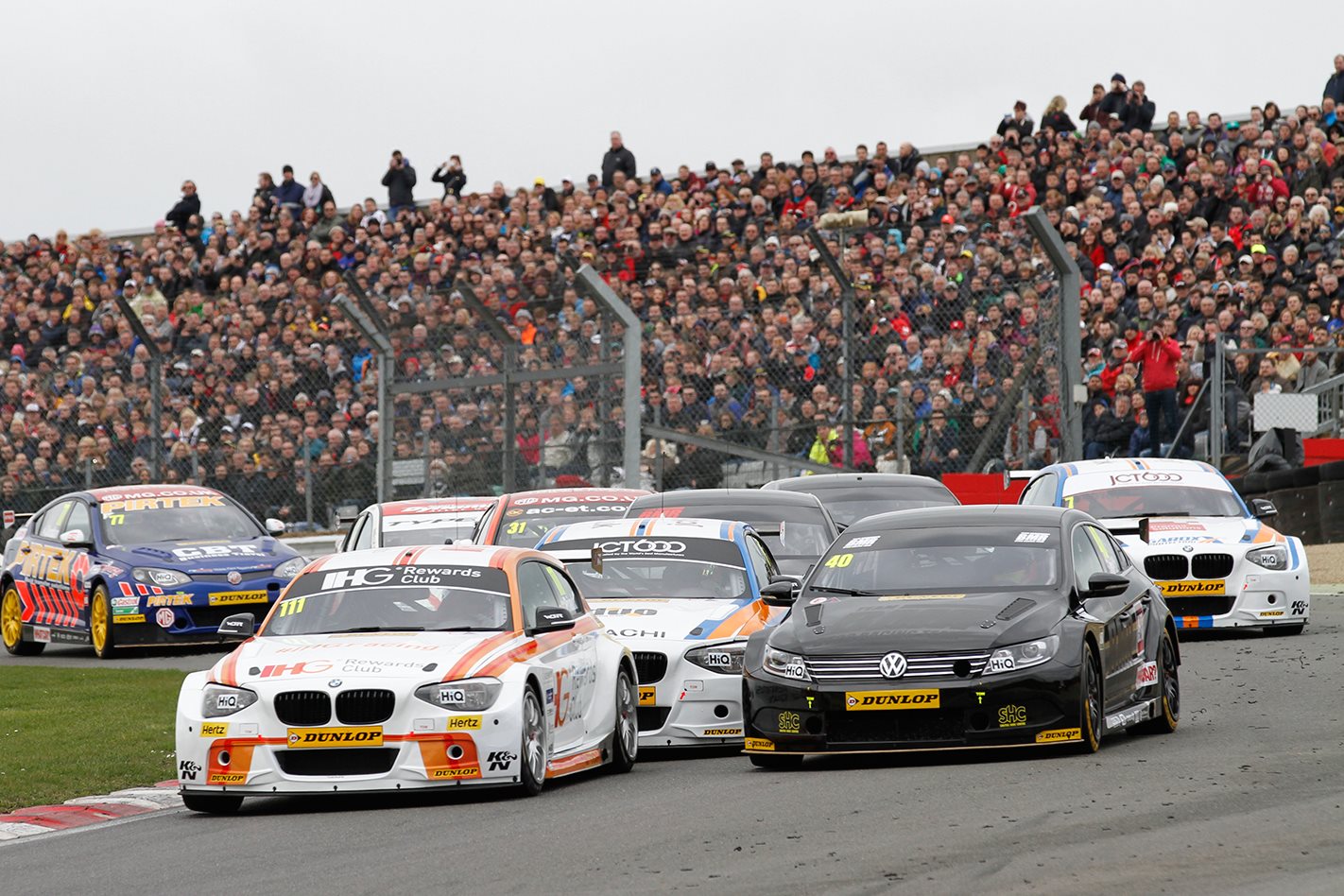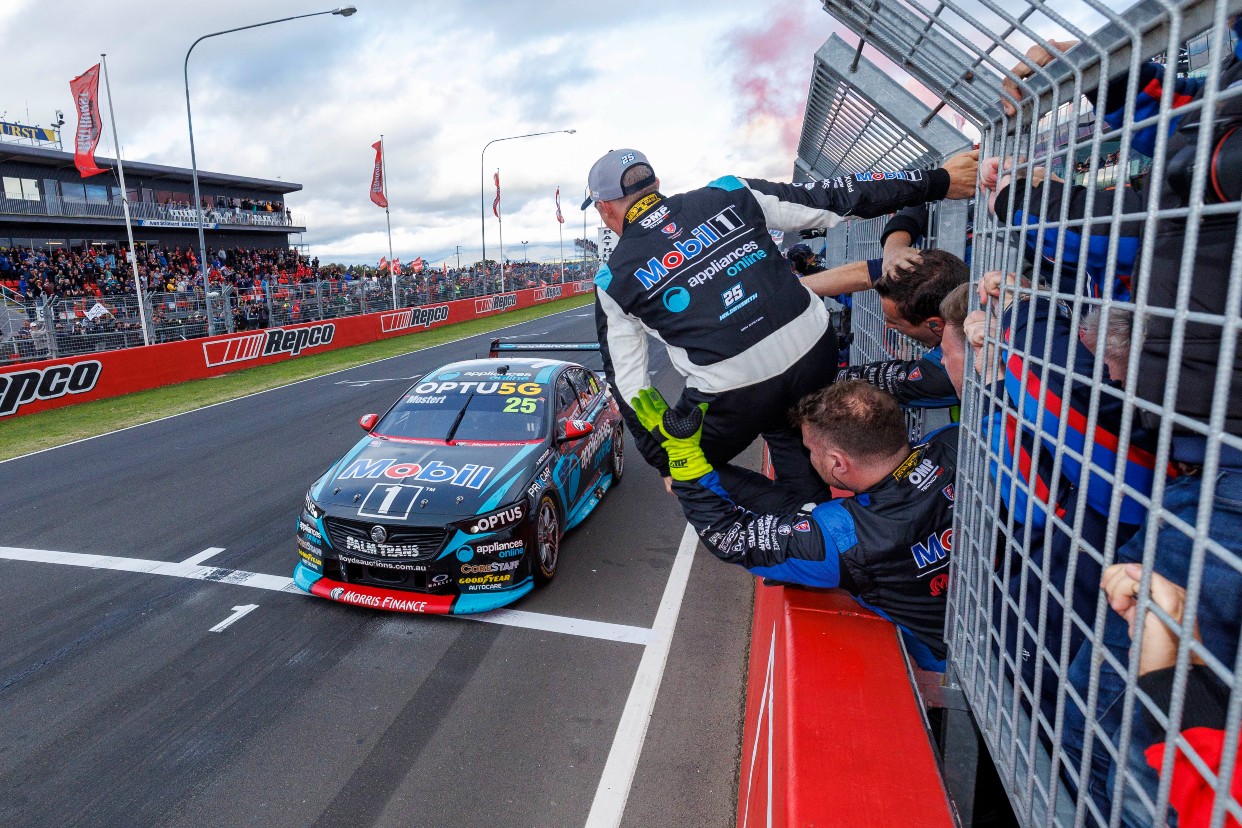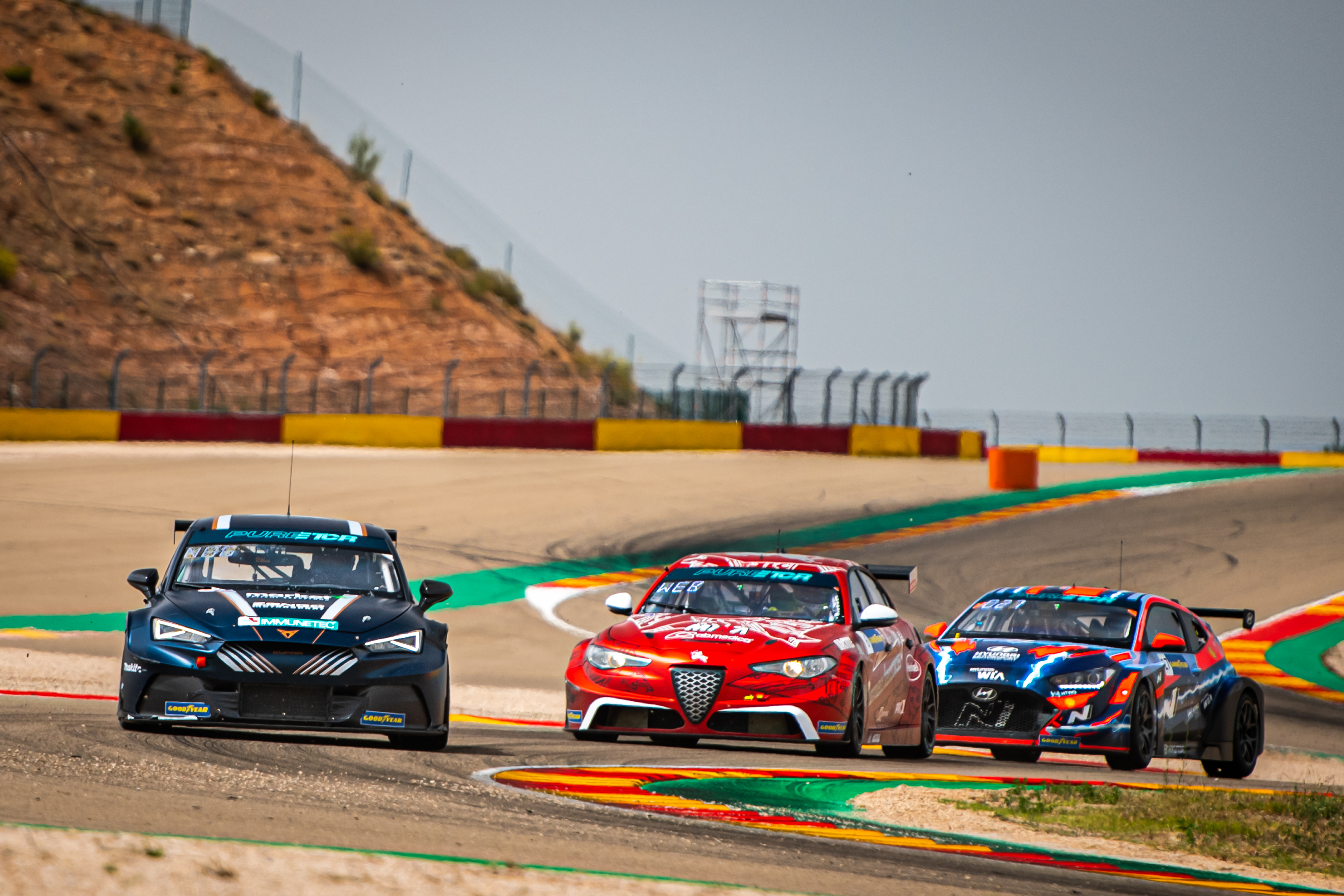ENDURANCE RACING: Fatality to hit Nordschleife
LAST month’s terrible crash of a Nissan GT-R GT3 driven by Jann Mardenborough at the Nurburgring’s Nordschleife threatens to bring significant change to the annual Nurburgring 24 Hours endurance race.
Racing in the opening round of the VLN endurance series a fortnight ago, the young Briton’s Nissan took off at the Flugplatz, flipped over the debris fencing and into a viewing area, hitting and killing a spectator.
It was eerily reminiscent of the backflips of Mark Webber and Peter Dumbreck in their Mercedes sports cars at Le Mans in 1999.
Mardenborough’s frightening lift-off brought instant action from authorities, who temporarily banned GT3 machines from the Nordschleife while the German motor sport body, the DMSB, investigates.
With the 24 Hours of Nurburgring less than five weeks away, time is tight.
The 24-hour race is a massive attraction in Germany, often with more than 200 starters, and more than 200,000 enthusiastic fans in the forests around the legendary circuit. The atmosphere is always convivial, like a massive party, with the aroma of sausages on barbeques wafting through the trees.
A dark cloud now hangs over one of the great races, and, no, I’m not just alluding to the crazy weather experienced in the Eifel Mountains. Fog, rain, snow…and that’s just one summer’s day.
If there are no GT3 cars permitted, the race would lose many of its biggest attractions from the pointy end of the grid.
Like our own annual Bathurst 12 Hour, the GT3 cars are the outright runners.
The Nordschleife circuit is unique in motor sport, too. Think of four Mount Panoramas linked together. It’s isn’t known as The Green Hell for nothing, with its countless blind corners, roller-coaster crests and lack of run-off.
There has been preliminary talk about artificial chicanes at the parts of the circuit where the noses of the GT3 cars lift.
Though necessary on safety grounds, changes will not be welcomed; the Norschleife has so much raw appeal to drivers and fans because it has been virtually unchanged since its first race in 1927.
Driver Darren Turner, speaking to motorsport.com, has suggested spectator-free zones, like at Le Mans. He specifically nominates areas near the Nordschleife’s three big crests: “Then the only person who could get hurt is the driver, and it’s our choice to be there or not. That would be a quick change they could implement in time for this year’s 24-hour race.”
“There’s nothing as exhilarating as driving this spec of car around that circuit,” he said. “I hope, although this has been a horrendous experience for everyone involved, we learn positive lessons and we don’t have a massive change and lose what that circuit is all about – the challenge.”
ENDURANCE RACING: Aussie Talbot set for Blancpain series
BRISBANE driver Liam Talbot is primed for his ambitious attack on the Blancpain Endurance Series, which starts next weekend at storied Monza, Italy.
Driving with Kessel Racing, this will be Talbot’s fourth race in the Ferrari 458 GT3 and the start of his first full season with the Swiss team.
Though very much an inexperienced amateur, Talbot has learned much from an extensive test at Paul Ricard in France and now aims to become a GT endurance racing regular in 2015 as he works towards the goal of competing in a prototype at Le Mans.
“The test at Paul Ricard really helped to get back into a race rhythm in the 458,” said Talbot. “It’s been a few months out of the car, but having significantly stepped up physical training in preparation for the series.
“As with so many other recent races, this is a new track for me. Having watched a number of videos provided by Kessel and put in the hours on the sim, I’m certainly feeling prepared.”
TOURING CARS: Sensational opener at Brands
THE three action-jammed races of the opening Sunday of the British Touring Car Championship at Brands over Easter produced three nail biters, and three different victors – each with a winning margin of less than half a second.
Rob Collard, Gordon Shedden and Matt Neal claimed a round win apiece with other drivers and makes well in the mix, suggesting this year’s series could go one of any number of drivers. And makes.
Triple world touring car champ, and occasional Bathurst 1000 racer Andy Priaulx made a stunning return to the series by taking the first pole of the new season in his rear-drive BMW 125i.
But BMW team-mate Collard claimed the BTCC’s first race of 2015 after Priaulx struck tyre troubles.
The second race was a thriller with Shedden’s Honda Civic Type-R winning by a tight 0.04sec margin from Priaulx. Neither looked chances of victory until four laps from the finish when pole-man, VW’s Jason Plato, punctured and fired off the black stuff and into the gravel.
Watched by a large crowd, the last of the three races on Easter Sunday gave the debuting Civic Type-R its second win but this time it was lanky former champ Neal taking the spoils after fighting off MG’s Jack Goff.
Pole-man Rob Austin (Audi) and Andrew Jordan (MG) fought over the last spot on the podium until they clumsily tripped over each other and handed third to the opportunistic Aron Smith in a VW CC.
The BTCC now moves to Donington two weekend from now with Neal and Goff tied at the head of the table a mere point ahead of Goff, and four makes in the first four slots.
RALLYCROSS: Date set for Australian return
ACCORDED world championship status and undergoing a huge resurgence, the spectator-friendly sport of rallycross is returning to Australia four decades after its last wave of popularity.
A new purpose-built 1.8km course at Broadford, one hour’s drive from Melbourne, is set to host big-time rallycross starting with two national-level meetings on July 19 and October 25.
Plans are moving forward to stage a six-meeting series in 2016.
In the 1970s, high-flying rallycross action at Calder (Melbourne), Catalina (Katoomba) and Tailem Bend (outside Adelaide) attracted prominent circuit racing names such as Peter Brock, Colin Bond and Allan Moffat, and rally champions Bob Watson, Barry Ferguson and Bruce Hodgson. The action transfixed TV audiences and made many rally and amateur drivers household heroes.
The lone Australian Rallycross Championship was held at the Tailem Bend circuit in South Australia in June 1979 and was won by ex-F1 driver and later Bathurst 1000 winner Larry Perkins driving a 2.0-litre Volkswagen Beetle.
The Broadford meetings will be staged by Rallycross Australia, a new entity formed by a group led by Australian rally champion and top rallycross competitor, Bob Watson. CAMS is actively supporting the sport’s revival.
The inaugural Rallycross Australia meeting will be limited to 60 competitors in cars currently qualifying for Australian autocross or rally events.
Cars will compete four at a time over three laps of a course combining sealed and unsealed surfaces, jumps and water hazards. “Rallying is exciting enough, but racing other rally cars is something else” said organiser Watson.
Rallycross was born in the United Kingdom in 1967 and is today experiencing a huge resurgence in popularity in both Europe and the USA.
On the back of this revival, the FIA has established a World Championship for Rallycross with top rally drivers including Petter Solberg and Ken Block participating in factory sponsored cars.
The Broadford course incorporates part of the existing tarmac track used for motorcycle racing along with an additional gravel section which includes jumps and a water splash to simulate a rally environment.
A natural amphitheatre setting along with pit garages, control tower, timing facilities, toilets and catering make Broadford an ideal venue.
BOOK REVIEW: Kiwi slams our Jack
JACK Brabham was a great tester but lacked people skills, and the acclaimed designer/engineer Ron Tauranac was slow to adopt new technology, writes New Zealander Max Rutherford.
In his new autobiography, Paddock to Podium (The Mechanic’s View), Rutherford – one of many Antipodean mechanics who traipsed off to Europe in the 1960s and 70s seeking work and adventures in motor sport – does issue a warning that Australians may not be happy with some of his comments.
He certainly doesn’t hold back in a scathing assessment of Brabham’s indifferent relationships with his mechanics.
The book starts slowly with recollections of Rutherford’s early days as a speedway driver in New Plymouth, but quickly moves on to his relocation to Europe and subsequent association with many hero drivers of the era. It was a time of dangerous motor racing, pretty women, wild parties and hard work…
Rutherford’s biggest claim on fame is his stint as joint chief mechanic heading the Matra Tyrrell team that fettled Jackie Stewart’s car in the year the great Scot won his first world championship in 1969.
Younger followers of motor sport may be fascinated or horrified by the rather crude, almost amateurish environment of 1960s Formula One painted by Rutherford. This was well before Bernie Ecclestone stamped his professional, slick imprimatur on the sport.
The author tells the tale of heading to the track on race morning in Barcelona with an unfinished race car and little time to spare. Brabham donned overalls and joined Rutherford in the back of the transporter, the pair assembling a gearbox as the rig lurched through the corners en route.
Rutherford admitted great respect for Brabham’s nous and sensitivity as a test driver following a day at Goodwood shaking down a new Tauranac-designed F3 car. After a few laps, Jack reported that one front spring was stronger than the other and asked Rutherford to correct it for the following day’s testing. Rutherford argued with Brabham that he’d personally checked the springs and didn’t believe they were mismatched. That night at the factory, Rutherford set out to prove Brabham wrong but was stunned to find a slight discrepancy in the spring rates.
Rutherford wrote admiringly: “I believe few drivers in the world have ever been in that class as a test driver. For any driver to find a fault is one thing, but to be able to analyse the problem and find a solution is the mark of a gifted driver, with a lot of engineering skills thrown in.”
But Rutherford was less impressed with Brabham’s manner out of the race cars, suggesting Jack couldn’t be bothered with even a “good morning” or a “thank you” after an all nighter. Commented Rutherford: “I guess it was just his nature, although other people told me he was basically shy and communication was not one of his strengths.”
The Kiwi is also critical of the “gruff and overbearing” Tauranac’s propensity to bollock his mechanics, also commenting that Ron’s continued use of a space frame construction in 1969 was hardly advanced thinking. Throughout the pages are intermittent jibes about the Brabham cars when they failed to finish races.
Rutherford may not have support for his claims that Tauranac built his cars to last just one season, citing the example of the unreliable Brabham that Derek Bell drove in the 1970 Tasman Series.
Getting sacked by Tauranac may have hurt Rutherford psychologically…
Rutherford’s relationships with Hulme, Frank Gardner and, later, Jackie Stewart were way warmer.
The book is laced with stories highlighting the nomadic life of the mechanics, and the primitive conditions of F1 back then.
In apartheid South Africa, the white manager of a hotel denied the team’s request for fresh corn on the cob growing in a field nearby. That is “kaffir food”, the manager said emphatically.
Rutherford isn’t above telling tales on himself, either. He mentions nearly torching the whole F1 grid (bar the Ferraris) after Stewart’s Matra caught alight while he was working on it in the Watkins Glen pits.
The trial-and-error approach to wings in F1 is fascinating, too, as is Rutherford’s accounts of the first four-wheel-drive F1 cars.
He praises Stewart’s testing skills, putting him on a level with Brabham. At Monza, Stewart’s clever call to use different gear ratios gave him the surge to win the race coming out of the final corner.
There’s also a mea culpa for not putting the obligatory warning note on Stewart’s steering wheel after fitting fresh brake pads during testing at Silverstone. Rutherford says the outcome could have been more tragic than just a big scare for the driver. The lesson was rammed home later that same day when he helped cut the body of F3 driver Chris Williams from a wrecked car.
Rutherford’s prose is enlivened by some excellent insider photos taken on the road.
Rutherford spent not quite five years in Europe but returned home with his Irish bride to retrieve a more normal life, stepping away from automobiles and eventually designing women’s sports bras.
Rutherford’s name doesn’t trigger instant recognition on this side of the Tasman but this book may change that.
Though not without its editing errors, this self-published book of recollections serves an important role in preserving some vital motor racing history that otherwise could easily be overlooked.
Paddock to Podium is available at Sydney’s Autobookworld priced at $59.95.
Sign up here to receive the latest round-up of Wheels news, reviews and video highlights straight to your inbox each week.





